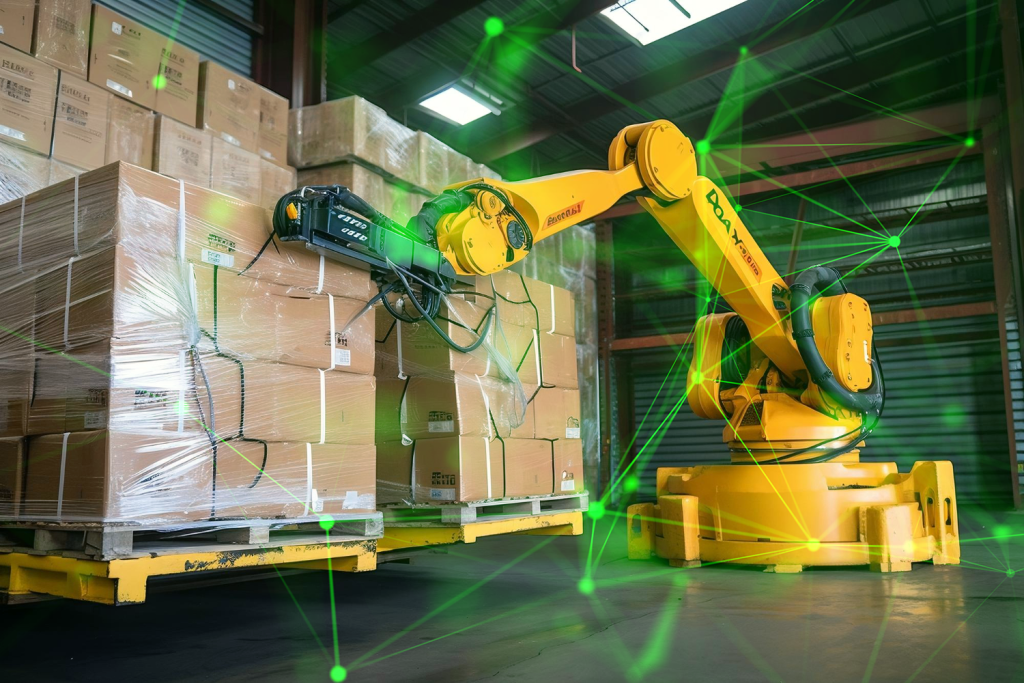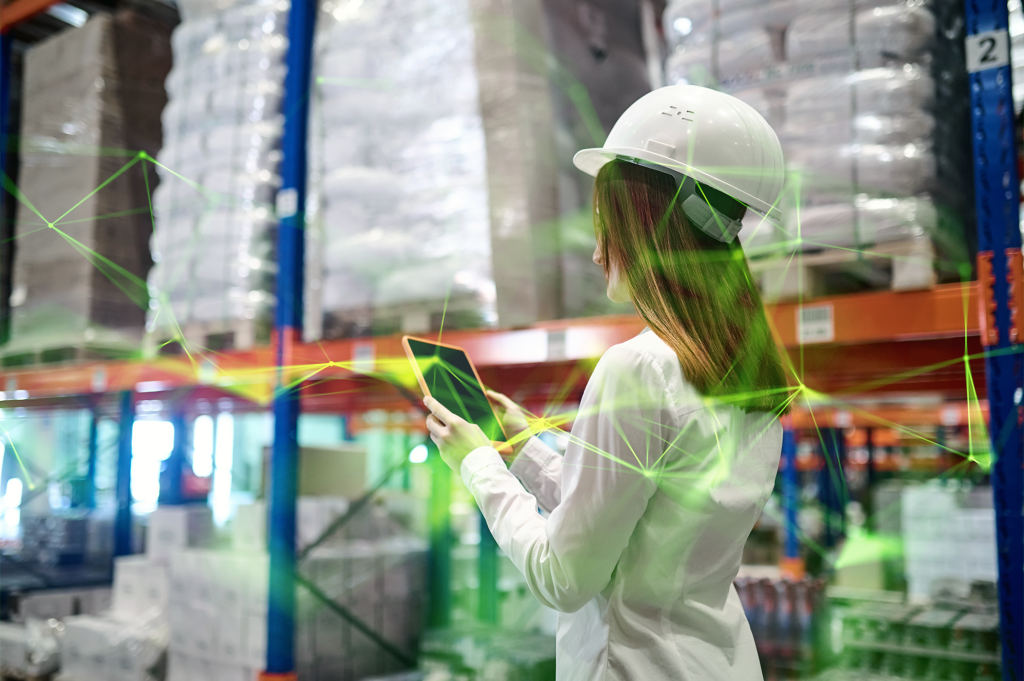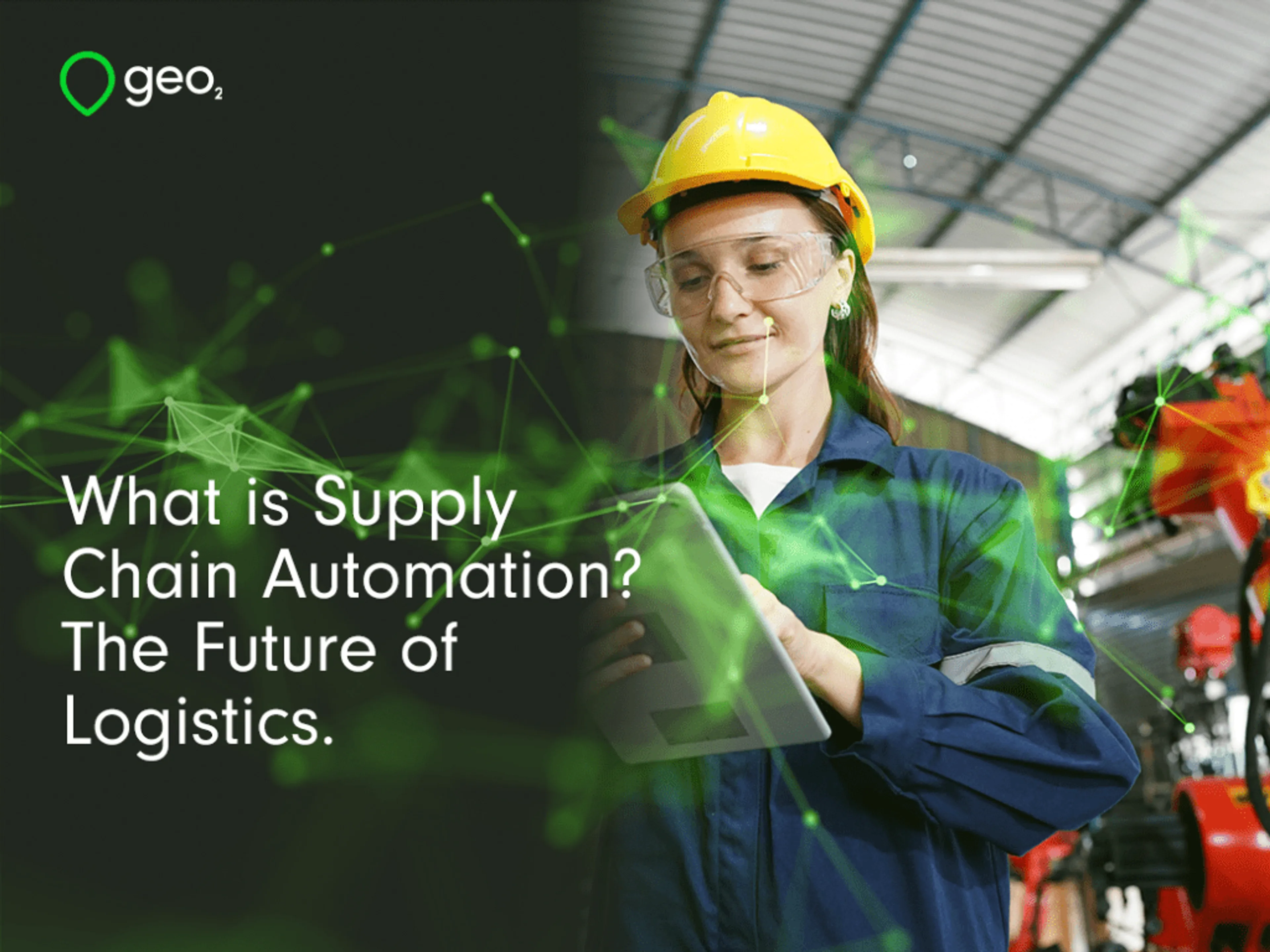Defining Supply Chain Automation.
Supply chain automation is the replacement of manual tasks with technology-driven workflows and processes. This streamlines your operations, speeding everything up and initiating tasks without any manual intervention.
Automation brings greater efficiency to your logistics business. You can operate more quickly and seamlessly. You can automate a series of complex workflows and your systems can automatically execute further actions based on certain criteria.

Limitations of Manual Systems.
Modern logistics and distribution operations face increasing pressure to deliver quickly while also keeping costs low. Balancing these two competing aspects is what drives profitability and long-term success for a business.
Using manual systems does not help companies to improve and succeed. They are slow and laborious and humans are renowned for making mistakes. Stock may be incorrectly logged, leading to order issues and delays. Errors are costly, too. For example, you may have to resend an order that has been fulfilled incorrectly.
Even where errors can be rectified, this can result in lower customer satisfaction. It can be hard to win back approval from a customer after you have initially failed to prove yourself.
Using entirely manual processes in your warehouse or delivery operation takes considerable effort. With a paper-based system, vital documents can get lost or damaged, which can slow you down as your staff need to take more time to be sufficiently diligent in their work.
Benefits of Supply Chain Automation.
Implementing automation into your supply chain has several advantages, each of which contribute to a more robust, efficient and customer-focused operation.
Improved Operational Efficiency.
Using automation, you can process tasks more quickly, make faster decisions and are able to manage higher volumes and throughputs. In this way, you can do more with less, effectively maximising your output while minimising your effort.
Cost Savings.
Automation can help to improve your financial returns. You'll have lower overheads thanks to a reduced stock holding. Automated inventory management ensures that you only store what you need, thereby cutting down on warehousing costs.
Automation also reduces the need for manual labour in repetitive tasks, which results in lowered staffing costs. Over time, these savings add up, positively impacting your bottom line.
Real-time Data Analytics.
With automation comes the ability to use real-time data analytics. This allows you to instantly make informed decisions, whether that’s to adjust your procurement strategies or to tweak your delivery timescales.
With immediate access to relevant data, you can proactively address issues, identify trends and even predict future supply chain bottlenecks.

Better Accuracy.
Human error is inevitable in any manual system. Supply chain automation helps by significantly reducing the margin for such errors, especially when it comes to stock management. With automated tracking and reporting, you gain better stock accuracy, ensuring that you're neither understocked nor overstocked, thus optimising your operations.
Enhanced Customer Experience.
Automation paves the way for an enhanced customer experience. Automated systems can send timely updates to customers, provide faster deliveries and even anticipate customer needs based on past buying behaviour. When your supply chain is smooth and efficient, it reflects positively on customer satisfaction and loyalty.
Types of Supply Chain Automation.
There are many components and tools involved in supply chain automation – across hardware, software and IoT devices.
Supply Chain Software.
In the modern supply chain, software plays an indispensable role in bringing together and automating various aspects of the operation.
The Enterprise Resource Planning (ERP) system serves as the financial backbone of your company. It seamlessly integrates business processes across procurement, finance, accounting, sales, marketing and customer management, providing a unified view of financial data and performance.
In parallel, a Warehouse Management Systems (WMS) revolutionises how stock is stored, tracked and managed. It automates and optimises tasks such as receipt, putaway, replenishment, picking and packing, plus it can improve your warehouse layout.
Logistics automation involves using a Transportation Management System (TMS) to optimise routing, load planning and carrier selection, thus improving the delivery efficiency and cost-effectiveness. A TMS eliminates hours of manual work in planning and scheduling deliveries. It can plan almost instantly, providing the best routes for your drivers based on aspects such as traffic conditions, fuel consumption and speed of delivery.
Used in conjunction, these software systems provide an end-to-end solution that automates workflows, optimising efficiency and productivity for distribution businesses.
Electronic Data Interchange (EDI).
EDI streamlines communications and speeds up trade between you and your partners. It enables the automated exchange of critical business documents between different systems across the supply chain. These include purchase orders, invoices and advanced shipping notices (ASNs).
This automated exchange of documents speeds up your transactions, eliminates manual data entry errors and fosters real-time collaboration between supply chain partners, including suppliers, wholesalers, distributors, retailers and customers.
Robotic Process Automation (RPA).
With RPA, software bots perform repetitive tasks that would otherwise require protracted manual effort. RPA enhances efficiency by freeing up your staff, enabling them to be deployed on more strategic and value-added activities.
In transport and logistics, specific tasks that can benefit from Robotic Process Automation include data entry, procurement, stock management, order processing, returns, payments, email communications, report generation and bills processing.
The result is a more agile and responsive supply chain operation, better equipped to adapt to market demands and fluctuations.
Autonomous Mobile Robots (AMRs).
AMRs are valuable to supply chain operations in handling tasks such as transporting goods within the warehouse or helping with picking or replenishing stock. They elevate productivity and boost accuracy.
They are ‘cobots’ – collaborative bots – that can work cooperatively with human workers, taking over the monotonous, repetitive or more hazardous responsibilities.
Robots help you to expand your capacity, while your employees are freed up to focus on more intricate tasks, or those that absolutely demand human skills and intelligence, such as order packing and operational management.
Barcodes, Scanning Systems and RFID Technology.
Barcodes are cost-effective and widely used for basic tracking of goods and data collection. Scanning systems provide the mechanism for reading these codes, speeding up tasks like stock checks, picking and order processing.
RFID technology takes things a step further, offering real-time tracking capabilities without the need for direct line-of-sight between the goods and the scanner.
Automation like this enhances your visibility and accuracy across the supply chain. These technologies elevate stock management and accelerate order processing speeds.
Picking Automation.
Picking automation technologies, including pick-to-light systems and voice picking, are advanced solutions that speed up and streamline the picking process by providing real-time, interactive guidance for warehouse operatives.
With pick-to-light, the location of the correct items to be picked is illuminated and voice picking allows for hands-free instruction through headsets.
Picking automation technology eliminates the need for paper-based lists and manual checks, drastically reducing the chance of errors and mispicks. This enhances your worker productivity and speeds up the entire picking operation.

Automated Storage and Retrieval Systems (AS/RS).
Automated storage and retrieval systems are computer-controlled to automatically place and retrieve your goods. This optimises storage density and reduces manual labour.
Various systems are available to automatically bring pallets, totes, trays or bins to your pickers, returning them to storage after workers have used them.
They range from the fully-automated warehouses such as the Ocado Smart Platform, to smaller systems and devices that employ conveyors to automatically transport goods around the warehouse.
Internet of Things (IoT) Sensors.
IoT sensors offer real-time monitoring and data collection about goods and storage conditions. They can track the temperature and humidity of perishable goods, monitor the efficiency of your machinery and locate goods and equipment within the warehouse.
The data collected can be analysed for predictive maintenance, optimised routing or even automated stock management. IoT sensors generate data that helps you track KPIs and take action on those insights.
Autonomous Vehicles.
Drones, self-driving lorries and independent autonomous delivery vehicles are invaluable in your last-mile delivery.
They can operate around the clock and without human involvement, thereby speeding up delivery times and reducing costs in the expensive final delivery leg.
Equipped with advanced sensors and GPS technology, they can adapt to real-time traffic conditions and optimise their routes in response to real-time conditions.
Predictive Analytics.
Predictive analytics provide a forward-looking lens through which you can assess, manage and optimise various aspects of your distribution operation.
They use historical data and machine learning algorithms to forecast demand patterns, identify potential bottlenecks and suggest optimal stock levels. This helps you to proactively adjust your strategies, thereby reducing costs and minimising waste.
Predictive analytics provides the intelligence input that helps you make more informed decisions, transforming your supply chain. It moves you away from merely reacting and allows you to proactively adapt to changing conditions.
Embracing Automation in the Supply Chain.
In distribution and logistics, the role of supply chain automation is vital in helping companies achieve and maintain a competitive edge.
From real-time analytics to predictive forecasting, automation technologies sit at the core of your supply chain operation. They liberate your workforce from monotonous tasks, minimise error rates, and bolster financial gains – all while enriching the customer experience.
Supply chain automation is a strategic imperative to be embraced in the interests of long-term sustainability and success. The key takeaway is clear: if you’re not automating, you’re not optimising.
Transport management as provided by Geo2 is central in automating the logistics aspects of your distribution business.
Try it for free today to find out how Geo2 can simplify your operations and speed up your deliveries.
Why Consider Geo2?
Geo2 is a cloud-based system, with an app and web platform that was developed by Springboard Applications, a subsidiary of Balloon One.
It is a scalable system that can be used by a wide range of businesses, from independent delivery drivers, right up to enterprises and 3PLs that manage their own fleets.
Here is a summary of the main features and benefits:
- Sophisticated route planning and optimisation
- Cloud-based system accessible via the web
- Mobile driver app (Android and iOS)
- Proof of delivery
- Status updates and notifications
- Real-time fleet tracking
- API for integration with ERP, WMS and other supply chain software
- Fully scalable
- Subscription-based pricing
- Free version for single users
Geo2 is designed to help you make the most deliveries in the shortest amount of time, while minimising costs and fuel consumption.
